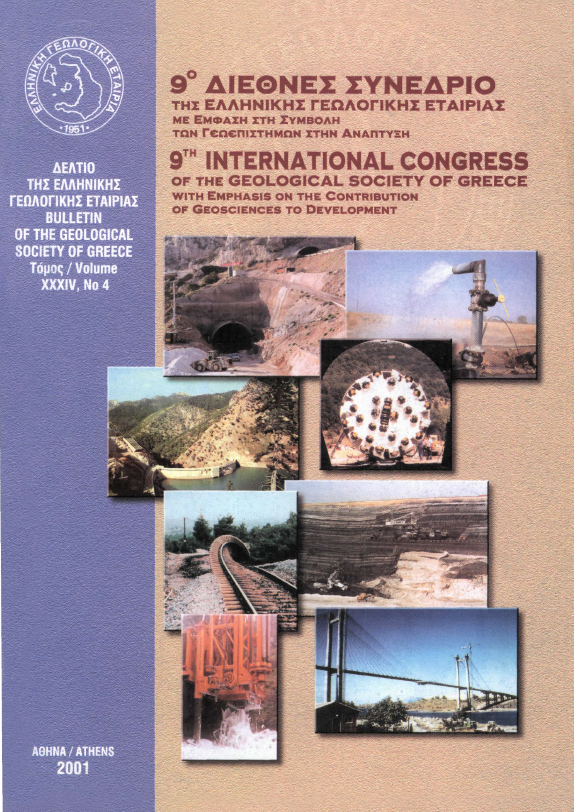APPLICATION OF 3-D VELOCITY MODELS AND RAY TRACING IN DOUBLE DIFFERENCE EARTHQUAKE LOCATION ALGORITHMS: APPLICATION TO THE MYGDONIA BASIN (NORTHERN GREECE)
Abstract
In the past years there has been a growing demand for precise earthquake locations for seismotectonic and seismic hazard studies. Recently this has become possible because of the development of sophisticated location algorithms, as well as hardware resources. This is expected to lead to a better insight of seismicity in the near future. A well-known technique, which has been recently used for relocating earthquake data sets is the double difference algorithm. In its original implementation it makes use of a one-dimensional ray tracing routine to calculate seismic wave travel times. We have modified the implementation of the algorithm by incorporating a three-dimensional velocity model and ray tracing in order to relocate a set of earthquakes in the area of the Mygdonia Basin (Northern Greece). This area is covered by a permanent regional network and occasionally by temporary local networks. The velocity structure is very well known, as the Mygdonia Basin has been used as an international test site for seismological studies since 1993, which makes it an appropriate location for evaluating earthquake location algorithms, with the quality of the results depending only on the quality of the data and the algorithm itself. The new earthquake locations reveal details of the area's seismotectonic structure, which are blurred, if not misleading, when resolved by standard (routine) location algorithms.
Article Details
- How to Cite
-
Galanis, O. C., Papazachos, C. B., Hatzidimitriou, P. M., & Scordilis, E. M. (2004). APPLICATION OF 3-D VELOCITY MODELS AND RAY TRACING IN DOUBLE DIFFERENCE EARTHQUAKE LOCATION ALGORITHMS: APPLICATION TO THE MYGDONIA BASIN (NORTHERN GREECE). Bulletin of the Geological Society of Greece, 36(3), 1396–1405. https://doi.org/10.12681/bgsg.16508
- Section
- Seismology

This work is licensed under a Creative Commons Attribution-NonCommercial 4.0 International License.
Authors who publish with this journal agree to the following terms:
Authors retain copyright and grant the journal right of first publication with the work simultaneously licensed under a Creative Commons Attribution Non-Commercial License that allows others to share the work with an acknowledgement of the work's authorship and initial publication in this journal.
Authors are able to enter into separate, additional contractual arrangements for the non-exclusive distribution of the journal's published version of the work (e.g. post it to an institutional repository or publish it in a book), with an acknowledgement of its initial publication in this journal. Authors are permitted and encouraged to post their work online (preferably in institutional repositories or on their website) prior to and during the submission process, as it can lead to productive exchanges, as well as earlier and greater citation of published work.







